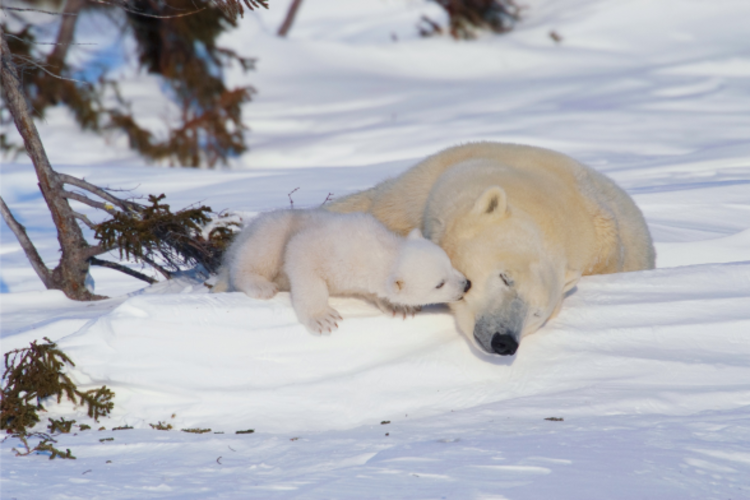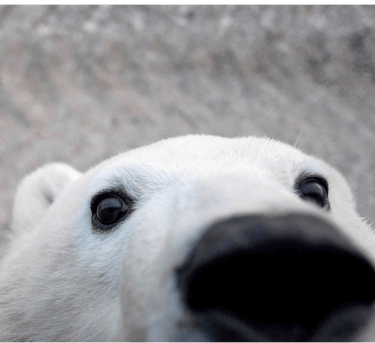Module 3B: Explore
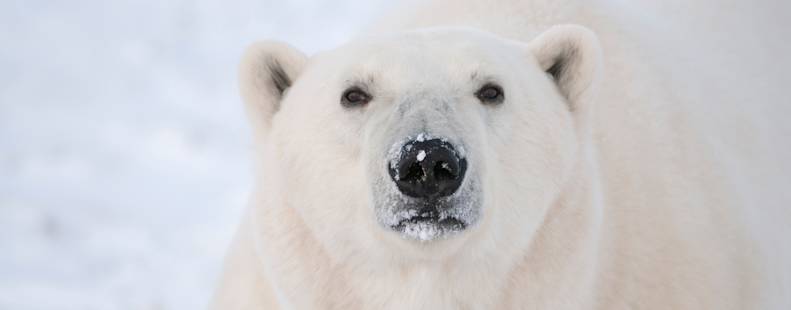
Photo: BJ Kirschhoffer / Polar Bears International
Status of Polar Bears: a look at the Barents Sea and Western Hudson Bay Subpopulations
Researchers from leading institutions including the University of Toronto Scarborough, Environment and Climate Change Canada, and Polar Bears International have established a mechanistic link between climate change-driven sea ice loss and polar bear population declines. This model fills gaps in monitoring data and provides a way to find the root of the causes that are driving changes in polar bear populations. The research highlights the urgent need for climate action to protect polar bears, especially vulnerable cubs, as the Arctic warms over four times faster than the global average.
Step One
Watch the videos below, as these long-time polar bear scientists reflect on changes they have seen in their careers.
Here is a snapshot of how climate change connects with declines in some polar bear populations:

Additionally, here is an article from Larissa Thelin talking about how different ecoregions are impacted.
Step Two
Read a little about the impacts on two subpopulations of Polar bears, those living in the Barents Sea, and those in the Western Hudson Bay.
Barents Sea Polar Bears
The Barents Sea polar bear population, shared by Norway and Russia, is one of 20 in the world. It makes up about 10 percent of the estimated global population. The Barents Sea subpopulation is also warming faster than anywhere in the Arctic. Sea ice loss due to climate change is the single biggest threat to polar bears, especially for vulnerable moms and cubs. Our work focuses on addressing both short- and long-term threats to polar bears. Our strategy is to do all that we can to ensure healthy populations of polar bears in the short term, like protecting mums and cubs, while also working to ensure their long-term future through meaningful action on climate change.
Range and Numbers
The Barents Sea population borders the Eastern Greenland population to the west and the Kara Sea bears to the east. It includes bears on Svalbard, Norway, in the western Russian Arctic—specifically, the Franz Josef Land archipelago—and the sea ice between them and to their north. In 2004, a joint Norwegian-Russian survey estimated approximately 2,650 bears in the population, roughly 1,000 of them in Norwegian territory. About 250 of these were found on Svalbard, with a similar number counted during a 2015 survey of the Norwegian side of the population.
Barents Sea polar bears are in what is known as the Divergent Ice Ecoregion, where ocean currents continually carry ice offshore as it forms. This movement is especially noticeable in summer. As the weather warms, new ice stops forming and the remaining ice drifts north, leaving a gap of water between land and the polar ice pack.
In response, bears in the Barents Sea adopt two principal strategies to find food. The "coastal" bears stay on and around Svalbard and hunt seals close to shore. These 250 or so bears have among the smallest home ranges of any polar bears—as little as 185 square km. They feed primarily on ringed seals on landfast ice (ice that is “fastened” to the coast) and glacial ice in fjords. Most of their feeding takes place in spring, after ringed seals have pupped and when food is most abundant.
The larger group consists of "pelagic "bears that head out onto the ice pack, traveling out to sea with it and wandering large distances in search of food. They hunt over a wider area (almost 400,000 square km) and for longer periods. This is because food is more dispersed on the sea ice than in coastal areas.
Whether a bear is a coastal or pelagic bear appears to depend on which path its mother took. Cubs born to coastal bears generally also become coastal bears. Indeed, a bear born in north Svalbard tends to remain in north Svalbard, while a bear born in the southern part of the archipelago is more likely to live most of its life there.
Sea Ice Dependent
Because polar bears rely on sea ice, they are at risk from a disappearing ice pack due to climate change, and that is of particular concern in the Barents Sea. The annual average temperature in the Barents region climbed by as much as 2.7 degrees Celsius (4.9 degrees Fahrenheit) each decade in the past 20 to 40 years, making it the fastest warming area on Earth. Unsurprisingly, this has impacted sea ice in the region: the landfast ice around Svalbard has declined by 50 percent compared to 1973-2000 and the sea ice season is two months shorter than it was two decades ago.
For coastal bears in the Barents, this means the ice on which they hunt ringed seals is sparser and more fractured, forcing them farther inland to feed on bird eggs or reindeer or requiring them to spend more time in the water, swimming from floe to floe and attempting to leap out of the water and onto ice to grab seals. Another consequence of decreasing ice is that the ice edge is retreating farther and farther away from the Svalbard coast, and sometimes is not even returning in the fall when pregnant bears need to come ashore to den. That means those bears must either swim long distances to shore, again depleting them of vital fat stores they need when going without food while they give birth and nurse their young, or den elsewhere.

Check out a recent blog to learn more about Maternal Den Monitoring - a non-invasive research programs aimed at better understanding moms and cubs. By using remote cameras to collect video footage of mums with newborn cubs we can assess body condition, behavior, and litter size.

We’ve provided our translated Visitor Guides for our interpretive space that share more about our work and the bears in the Barents Sea here: FRENCH Translation, GERMAN translation. These have been produced for international travelers visiting PBI’s Ice House in Longyearbyen, Svalbard, Norway but can be a great resource for a translation of the polar bear story in this region.
Western Hudson Bay Polar Bears
Of the 20 populations of polar bear found in the Arctic, the one in Western Hudson Bay, Canada, is arguably the most comprehensively studied and best known. Due to it’s location as one of the southernmost and most accessible polar bear subpopulations – in contrast to the extreme remoteness of much of the bears’ range – scientists have been able to study polar bears in and around the area of Churchill, MB for over 40 years.
Range and Numbers
The Western Hudson Bay population is one of the most southerly of all polar bear populations. As its name implies, it encompasses the western portion of Hudson Bay in Canada, from the Manitoba/Ontario border in the southeast of its range to Chesterfield Inlet in Nunavut in the northwest.
The most recent survey, in 2021, estimated a total of 618 bears in Western Hudson Bay, a 27 percent decline in just five years and a continuation of a long-term downward trend. The population is now about half the size it was in the 1980s. This study is linked below.
Fasting
The Western Hudson Bay population is a part of what is known as the “Seasonal Ice Ecoregion,” which encompasses most of the bears of central and eastern Canada. In this area of the Arctic, sea ice melts completely in summer – generally sometime in July, although the precise timing varies from year to year – prompting the bears to come ashore. While they may remain sporadically active on land during the summer, in general they create day beds or curl up in the brush to rest and wait.

Come fall, all polar bears in the WHB population (except for pregnant females, who will start to den up) increase their activity and move closer to the coast in anticipation of the bay freezing again and a return to their hunting grounds. After several months of fasting and resting, they are ready to return to the ice.
From early October onward, bears gather on the tundra along the shores of Hudson Bay, waiting for ice to form. As soon as the first coastal ice is thick enough to support their weight, the bears head out in search of seals. They may continue to trek back and forth between ice and land at first, but once the ice is thick and extensive enough, they remain out on the bay until forced to come ashore again the following summer.

The polar bears of Western Hudson Bay are especially vulnerable to climate-induced sea ice loss. Because they must already spend summer ashore, every additional day that they are forced to be on land, and therefore fast, can have a significant impact. In fact, on average, a polar bear loses a kilogram (2.2 pounds) of body weight every day that it is fasting; and because of climate change, the ice-free period is now three to four weeks longer than it was in the early 1980s. That means that polar bears in this area spend three to four weeks longer without food, compared to their grandparents. It is an especially dire position for pregnant females to be in, since they already experience an eight-month gap between meals from July to February.
We’ve provided our translated Visitor Guides for our interpretive space that share more about our work and the bears in the Western Hudson Bay here: FRENCH Translation, GERMAN translation. These have been produced for international travelers visiting PBI House in Churchill, Manitoba Canada but can be a great resource for a translation of the polar bear story in this region
Read the latest report on the decline in the Western Hudson Bay polar bear population.
Read the paper where the 180 day threshold is described.
A few Guiding Questions:
What role does the surface of the Arctic sea ice serve for polar bears?
What visible impacts on polar bear populations, particularly those in the seasonal sea ice ecoregion, does declining sea ice have?
What things need to be done to make a difference?
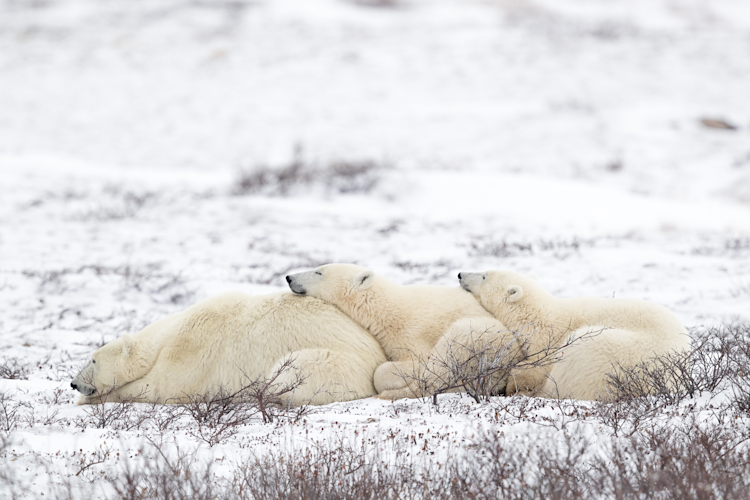
Photo: Tim Auer / Polar Bears International
Finished?
Continue on to Module 3C – Reflect.
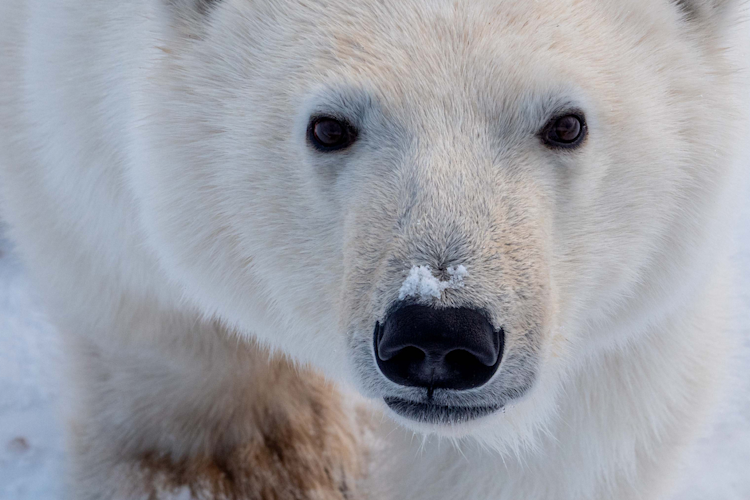
Photo: Kieran McIver / Polar Bears International
